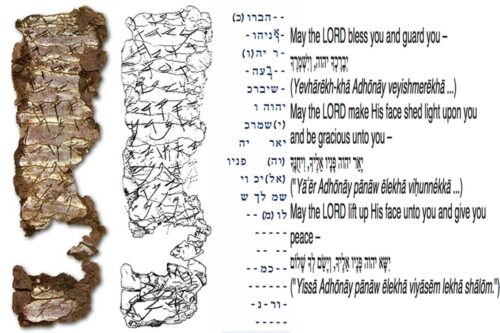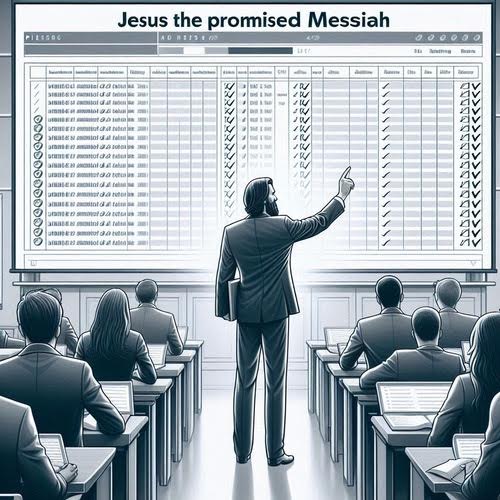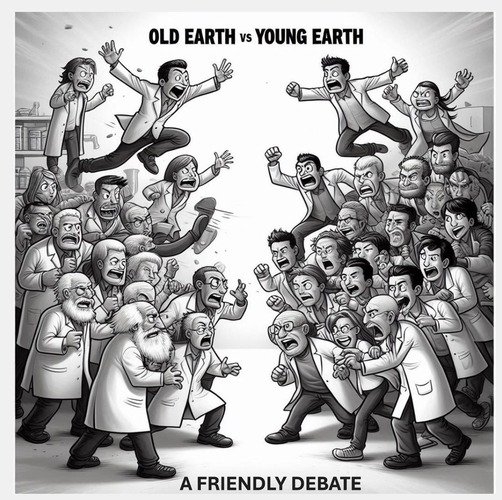Creation From Nothing: What Do We Truly Mean?
Why is there something rather than nothing? This question has haunted philosophers for millennia. Yet Scripture opens with a declaration so simple it sounds almost mundane: “In the beginning, God created the heavens and the earth.” But what exactly happened in that beginning? What does it truly mean when we say God created “from nothing”?
The doctrine of creatio ex nihilo touches the very heart of reality itself. Far from mere theological speculation, it addresses the most fundamental question of existence and shapes how we understand everything from the nature of God to the meaning of human life.
THE BIBLICAL WITNESS: WHAT SCRIPTURE ACTUALLY SAYS
When Genesis declares God “created” (bara), it uses a Hebrew word reserved exclusively for divine activity—never for human making or crafting. This isn’t reshaping existing materials like a potter with clay, but bringing into existence what simply wasn’t there before.
John’s Gospel makes this even more explicit: “All things were made through him, and without him was not any thing made that was made” (John 1:3). The universality is striking—all things, without exception. Paul reinforces this in Colossians 1:16, declaring that “by him all things were created, in heaven and on earth, visible and invisible.”
But perhaps the clearest statement comes in Hebrews 11:3: “By faith we understand that the universe was created by the word of God, so that what is seen was not made out of things that are visible.” Here Scripture directly addresses our question—creation from nothing, not from pre-existing matter.
The mechanism is equally remarkable. Throughout Genesis 1, we see the pattern: “And God said…” followed by immediate reality. “Let there be light,” and there was light. “Let there be an expanse,” and it appeared. Psalm 33:6,9 captures this perfectly: “By the word of the LORD the heavens were made… For he spoke, and it came to be; he commanded, and it stood firm.”
No process, no development, no gradual emergence—just the immediate response of reality to divine speech.
THE FRAMEWORK OF TIME
But when did this happen? Scripture doesn’t leave us guessing. Genesis provides a careful chronological structure: six days of creation, each marked by “evening and morning.” The same Hebrew word (yom) that defines these days is used throughout the Old Testament for ordinary 24-hour periods.
This isn’t merely poetic language. Exodus 20:11 explicitly connects God’s creative work to Israel’s sabbath pattern: “For in six days the LORD made heaven and earth, the sea, and all that is in them, and rested on the seventh day.” The comparison only makes sense if both refer to the same kind of days.
The genealogical records that follow provide an unbroken chronological chain from Adam to Abraham, and from there to recorded history. When we follow these biblical markers, they point to a creation that occurred thousands, not billions, of years ago.
Jesus Himself affirmed this timeline. When asked about marriage, He referenced humanity existing “from the beginning of creation” (Mark 10:6)—not after eons of cosmic evolution, but from creation’s very start.
WHAT THIS REVEALS ABOUT GOD
Creatio ex nihilo reveals profound truths about God’s nature.
- First, it demonstrates His complete sovereignty. Unlike theories that require pre-existing matter or evolutionary processes, biblical creation shows a God who needs nothing external to accomplish His purposes. He doesn’t work within limitations—He sets them.
- Second, it reveals His transcendence. The Creator exists independently of creation, owing His being to no external source. Yet it also shows His immanence—He remains intimately involved with what He has made, sustaining it moment by moment.
- Third, it displays His power. The God who speaks galaxies into existence can certainly handle whatever challenges we face. This isn’t abstract theology—it’s intensely practical truth about the One we worship and trust.
The Westminster Confession captures this beautifully: God created all things “of nothing, by the word of his power.” No struggle, no effort, no time constraints—just pure creative authority.
THE ORDER OF CREATION
Scripture presents a specific sequence that deserves our attention. Light appears before the sun, moon, and stars. Earth exists before the luminaries. Vegetation grows before solar energy is established. Birds are created before land animals.
This order challenges naturalistic explanations that depend on stellar formation preceding planetary development, or solar energy driving early plant life. The biblical sequence suggests God’s creative method transcends the natural processes we observe today.
The creation of Adam provides another striking example. Genesis 2:7 describes God forming man “from the dust of the ground” and breathing into him “the breath of life.” This isn’t gradual development from simpler life forms, but direct, immediate creation of the first human being.
IMPLICATIONS FOR SCIENCE AND FAITH
Taking Scripture’s account seriously raises fascinating questions about the relationship between God’s creative work and the natural world we study today. If creation occurred recently and rapidly, how do we understand evidence that seems to suggest vast ages?
Consider the implications of mature creation. When God created Adam, he wasn’t an infant but a fully grown man. The trees in Eden bore fruit immediately, not after years of growth. Light from distant stars illuminated the earth on Day Four, regardless of travel time under current physical laws.
This suggests God created a functioning cosmos, complete with the appearance of history it never actually experienced. The wine at Cana possessed the characteristics of aged vintage despite being created moments before. Similarly, geological formations, radioactive decay patterns, and astronomical phenomena might reflect the mature state in which they were created rather than actual elapsed time.
THE NEW CREATION CONNECTION
Understanding original creation highlights redemption itself. Paul describes believers as a “new creation” (2 Corinthians 5:17), using language that echoes Genesis. The same God who called forth the first creation from nothing can recreate human hearts in an instant.
This connection runs deeper than metaphor. Jesus’ resurrection represents the beginning of the new creation, just as Adam represented the beginning of the first. The promised new heavens and earth won’t result from gradual improvement but from the same creative power that first spoke reality into existence.
LIVING AS RECENT CREATIONS
If we truly grasp what creatio ex nihilo means—God speaking everything into existence recently, purposefully, and immediately—it should profoundly shape how we live.
We worship not a distant deity who set cosmic forces in motion billions of years ago, but the God whose creative works are fresh and immediate. His power isn’t theoretical but demonstrated in the recent past. His purposes aren’t obscured by eons of random development but clearly expressed in direct creative acts.
This understanding brings both humility and confidence. Humility, because we are creatures entirely dependent on our Creator’s sustaining word. Confidence, because the God who created ex nihilo remains fully capable of working powerfully in our lives today.
The doctrine of creation from nothing is more than theological curiosity—it’s the foundation of reality itself. In a world that increasingly seeks to explain existence without reference to God, Scripture’s opening declaration remains as radical and relevant as ever. The God who calls forth being from non-being deserves our worship, our trust, and our careful attention to His revealed truth about the world He made.
CREATION FROM NOTHING: RELATED FAQs
How do we explain distant starlight if the universe is only thousands of years old? Young earth creationists propose several solutions to this apparent problem. Light may have been created “in transit,” arriving at Earth instantly as part of mature creation—similar to how Adam was created as an adult, not an infant. Alternatively, the speed of light may not have been constant, with some evidence suggesting it was much faster in the past. Others propose space itself expanded rapidly during creation week, carrying light with it. While old earth advocates claim this is impossible, they themselves invoke unobserved “cosmic inflation” that supposedly stretched space faster than light in the early universe.
- Doesn’t radiometric dating show rocks are millions of years old? Radiometric dating relies on three unprovable assumptions: constant decay rates throughout history, closed systems with no contamination, and known initial conditions. However, global catastrophes like Noah’s flood would violate all these assumptions through heat, pressure, and water contamination. Young earth researchers have found carbon-14 in supposedly million-year-old samples, soft tissue in dinosaur bones, and other evidence suggesting much younger ages. While old earth proponents dismiss these findings, they cannot explain why “ancient” materials consistently show evidence of recent origin when tested by methods that don’t assume vast ages.
- Don’t Genesis genealogies have gaps that could accommodate millions of years? While some genealogies do contain gaps, Genesis 5 and 11 provide specific numerical ages that create chronological precision, not just lineage. These chapters state fathers “lived X years and begat” their sons, then lived additional years—language that requires direct succession for the chronology to work. Even if some names were omitted, the total timespan would only increase by thousands, not millions of years. Luke 3:23-38 traces Jesus’ genealogy back to “Adam, the son of God” without suggesting vast time gaps, and Jude references events from Genesis as recent history.
How do we account for the apparent age of the universe if it’s recently created? Mature creation explains this perfectly—God created everything fully functional from the beginning. When God created wine at Cana, it had the characteristics of aged wine despite being moments old. Similarly, trees in Eden bore fruit immediately, Adam was created as an adult, and light from distant stars illuminated Earth on Day Four. The alternative—gradual evolution over billions of years—requires countless unobserved transitional forms and violates the Second Law of Thermodynamics, which shows systems tend toward disorder, not increased complexity. Mature creation demonstrates God’s power and provides immediate functionality for His creation.
- What about the fossil record and geological layers that seem to show vast ages? Young earth creationists interpret these as evidence of rapid catastrophic burial during Noah’s flood rather than slow deposition over millions of years. Fossils require rapid burial to preserve details, and we observe massive fossil graveyards suggesting catastrophic, not gradual, processes. The geological column exists in complete form in very few places worldwide, and often appears in the wrong order according to evolutionary expectations. Soft tissue, original proteins, and DNA in supposedly ancient fossils indicate recent burial. While old earth advocates claim these findings are contamination, the consistency of young-age indicators across multiple dating methods suggests the standard interpretation needs revision.
- How do young earth creationists explain ice cores that supposedly show hundreds of thousands of years? Ice core dating assumes annual layer formation, but young earth researchers have demonstrated multiple layers can form in single years due to seasonal temperature variations and storm patterns. The Lost Squadron aircraft buried under 250 feet of ice in Greenland in just 50 years proves rapid ice accumulation is possible. Additionally, ice core dating is calibrated against other dating methods that already assume vast ages, creating circular reasoning. The biblical timeframe allows for rapid ice buildup during the post-flood ice age caused by warm oceans and cool continents. This model better explains mammoth preservation in permafrost and other ice age evidence than slow accumulation over supposed hundreds of millennia.
Why do most scientists accept old earth views if the evidence supports recent creation? Scientific interpretation is heavily influenced by philosophical presuppositions about naturalism versus supernatural intervention. Most scientists work within a framework that excludes divine action by definition, forcing them to explain all evidence through natural processes requiring vast time. However, many credentialed scientists who examine the evidence without naturalistic constraints find it consistent with recent creation. The scientific establishment often marginalises dissenting views through peer pressure and institutional bias rather than open debate. Additionally, much research funding depends on evolutionary assumptions, creating economic incentives to maintain the status quo. Truth isn’t determined by majority opinion but by evidence, and when examined without naturalistic bias, the evidence points toward recent, purposeful creation rather than gradual, undirected evolution.
CREATION FROM NOTHING: OUR RELATED POSTS
Editor's Pick
The Ketef Hinnom Scrolls: An Accidental Yet Phenomenal Find
SMALLER THAN OUR PALM, OLDER THAN THE DEAD SEA SCROLLS In 1979, a bored 13-year-old volunteer at an archaeological dig [...]

Caught in Adultery: How Reliable Is the John 8 Story?
"Let him who is without sin cast the first stone." Few Bible scenes capture Jesus' wisdom and grace quite like [...]

What Did the Inscription on Jesus’ Cross Really Say?
A REFORMED RESPONSE TO CLAIMS OF GOSPEL CONTRADICTIONS Sceptics love to point out what they see as a glaring contradiction [...]

Biblical and Systematic Theology: Why Do We Need Both?
TWO LENSES, ONE TRUTH Picture this familiar scene: A seminary student sits in the library, torn between two stacks of [...]

The Mysterious Two: Who Are the Anointed Ones in Zechariah?
Picture this: a golden lampstand blazing with light, flanked by two olive trees that pour oil directly into the lamp’s [...]

Regeneration Or Faith? Which Comes First in Salvation?
In the moment of salvation, does God regenerate our hearts first, or do we believe first? How we answer this [...]

Interracial Marriages: Does God Frown On Them?
The question hits close to home for many Christian couples and families today. As our churches become increasingly diverse, believers [...]
‘Because Angels Are Watching’: What Does 1 Corinthians 11:10 Mean?
“For this reason the woman ought to have authority on her head, because of the angels” (1 Corinthians 11:10, ESV). [...]

Why Does God Torment Saul With An Evil Spirit?
Would a holy God send an evil spirit to torment someone? This theological puzzle confronts us in the biblical account [...]

Paul’s Teaching on Women’s Roles: 1 Timothy 2:12 Explained
YARBROUGH’S BIBLICAL CASE FOR COMPLEMENTARIANISM In a world of shifting cultural values, few biblical texts generate as much discussion as [...]
SUPPORT US:
Feel the Holy Spirit's gentle nudge to partner with us?
Donate Online:
Account Name: TRUTHS TO DIE FOR FOUNDATION
Account Number: 10243565459
Bank IFSC: IDFB0043391
Bank Name: IDFC FIRST BANK








